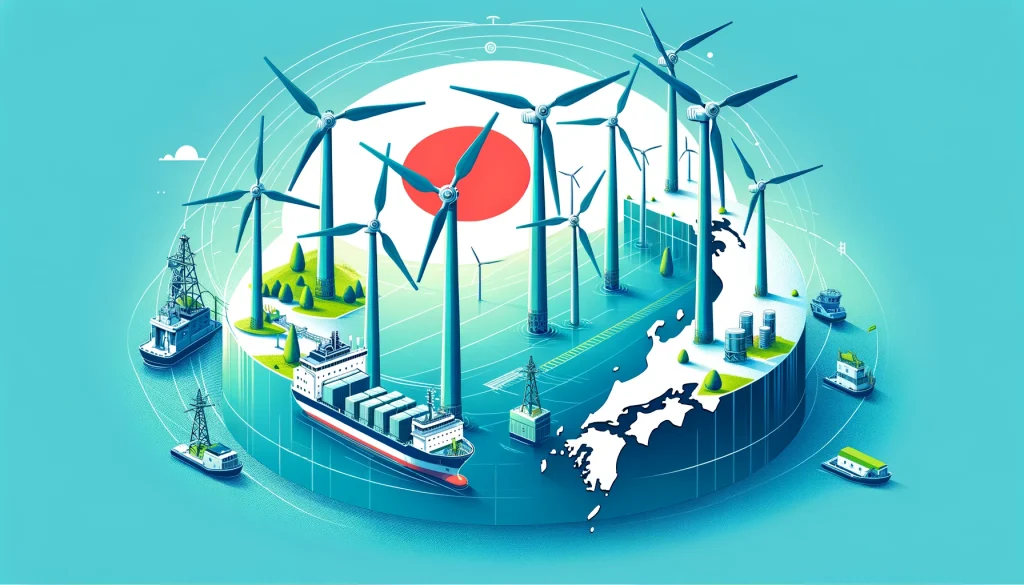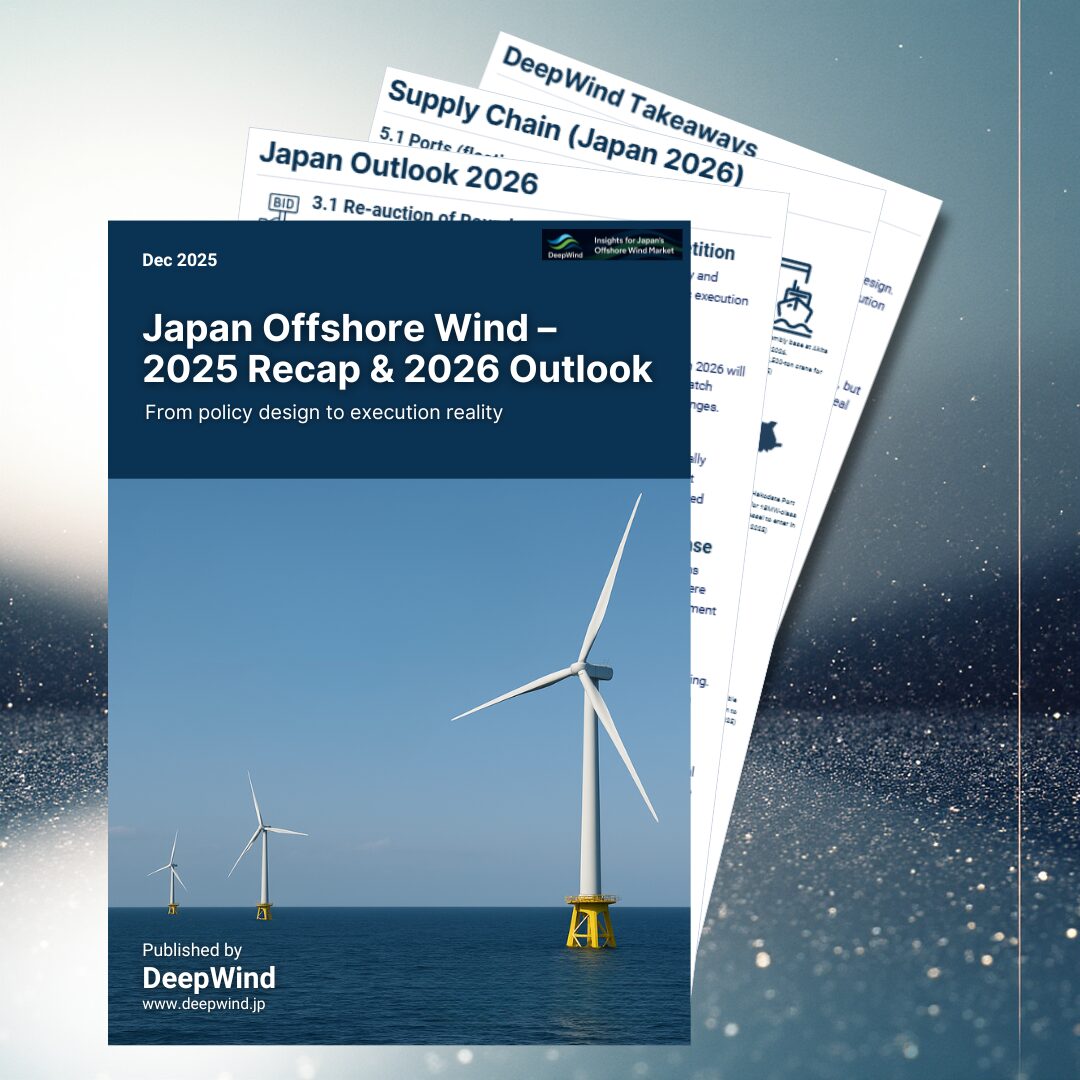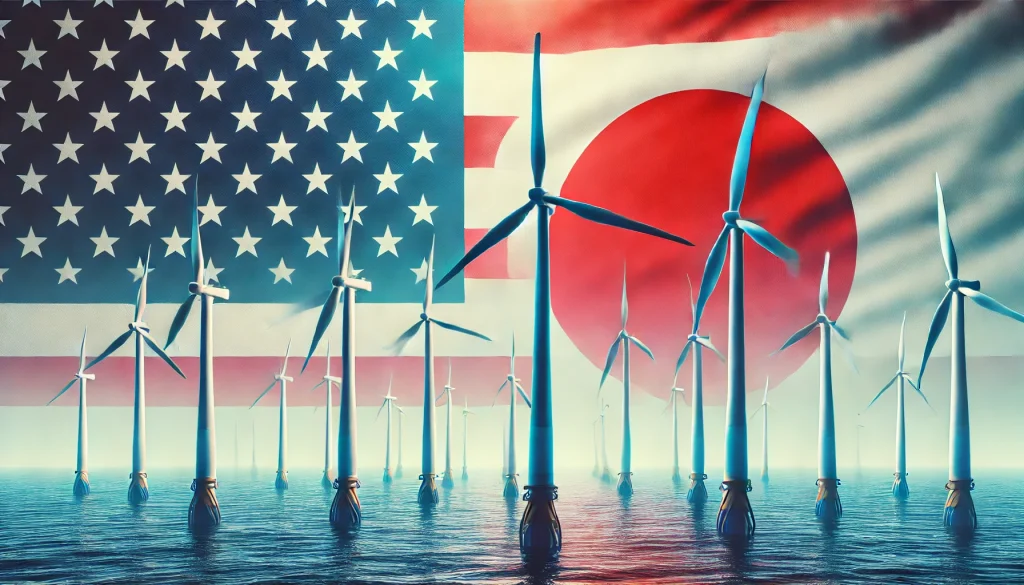Introduction
Japan has set ambitious goals to achieve carbon neutrality by 2050, aiming to expand its offshore wind power capacity to 10 GW by 2030 and 30–45 GW by 2040. To realize these targets, building a robust offshore wind supply chain is essential. Japan is actively working to strengthen domestic manufacturing of wind turbines, foundation structures, and specialized vessels in order to establish a sustainable energy supply system.
This article focuses on one key topic within Japan’s offshore wind market. For a broader perspective and other critical themes, explore our comprehensive overview here:
👉 Offshore Wind Market in Japan: Key Insights into Challenges and Opportunities
1. Latest Developments in the Offshore Wind Supply Chain
1-1. Domestically produce key wind turbine components.
- Toshiba: Manufacturing nacelles (generator units) in Kanagawa Prefecture.
- TDK: Producing high-performance magnets for wind turbines in Chiba Prefecture.
These initiatives are expected to not only increase Japan’s self-sufficiency in wind power but also stimulate domestic industrial growth and enhance competitiveness in the global market.
1-2. Expansion of Foundation Manufacturing
Domestic production of foundations—such as monopiles and jackets that support wind turbines—is also underway.
- Major firms like JFE Engineering and Nippon Steel are manufacturing foundation structures for large-scale offshore wind projects.
- As the offshore wind sector grows, these companies aim to establish more efficient production systems.
1-3. Development and Deployment of Specialized Vessels
Offshore wind installation and maintenance require specialized vessels.
- Blue Wind by Shimizu Corporation: Japan’s first self-elevating platform (SEP) vessel dedicated to offshore wind, capable of rapid turbine installation.
- CTV (Crew Transfer Vessel) by Akita Offshore Wind Service: Supports operations and maintenance (O&M), enhancing on-site work efficiency.
These vessels are expected to significantly boost Japan’s offshore wind construction capabilities.
2. Achievements and Future Outlook
2-1. Successful Case of a Domestic Supply Chain
The Ishikari Bay offshore wind project in Hokkaido achieved a domestic procurement rate exceeding 60%. This indicates that Japan’s offshore wind supply chain is beginning to demonstrate real competitiveness.
2-2. Enhancing Competitiveness and Expanding into Global Markets
Japan aims to strengthen its domestic supply chain while also entering the global market, with the goal of becoming a leading offshore wind nation in Asia. To achieve this, the following will be essential:
- Reducing manufacturing costs
- Promoting technological innovation
- Complying with international standards
Conclusions
The development of Japan’s offshore wind supply chain contributes not only to a stable domestic energy supply but also to economic growth and enhanced international competitiveness. With continued investment and technological innovation, Japan’s offshore wind market has the potential to become a global leader.
For a broader understanding of the challenges and opportunities surrounding Japan’s offshore wind sector, be sure to check out our Pillar article:
👉 Offshore Wind Market in Japan: Key Insights into Challenges and Opportunities
Explore more categories at DeepWind:
- 🔍Market Insights – Understand the latest trends and key topics in Japan’s offshore wind market
- 🏛️Policy & Regulations – Explore Japan’s legal frameworks, auction systems, and designated promotion zones.
- 🌊Projects – Get an overview of offshore wind projects across Japan’s coastal regions.
- 🛠️Technology & Innovation – Discover the latest technologies and innovations shaping Japan’s offshore wind sector.
- 💡Cost Analysis – Dive into Japan-specific LCOE insights and offshore wind cost structures.



